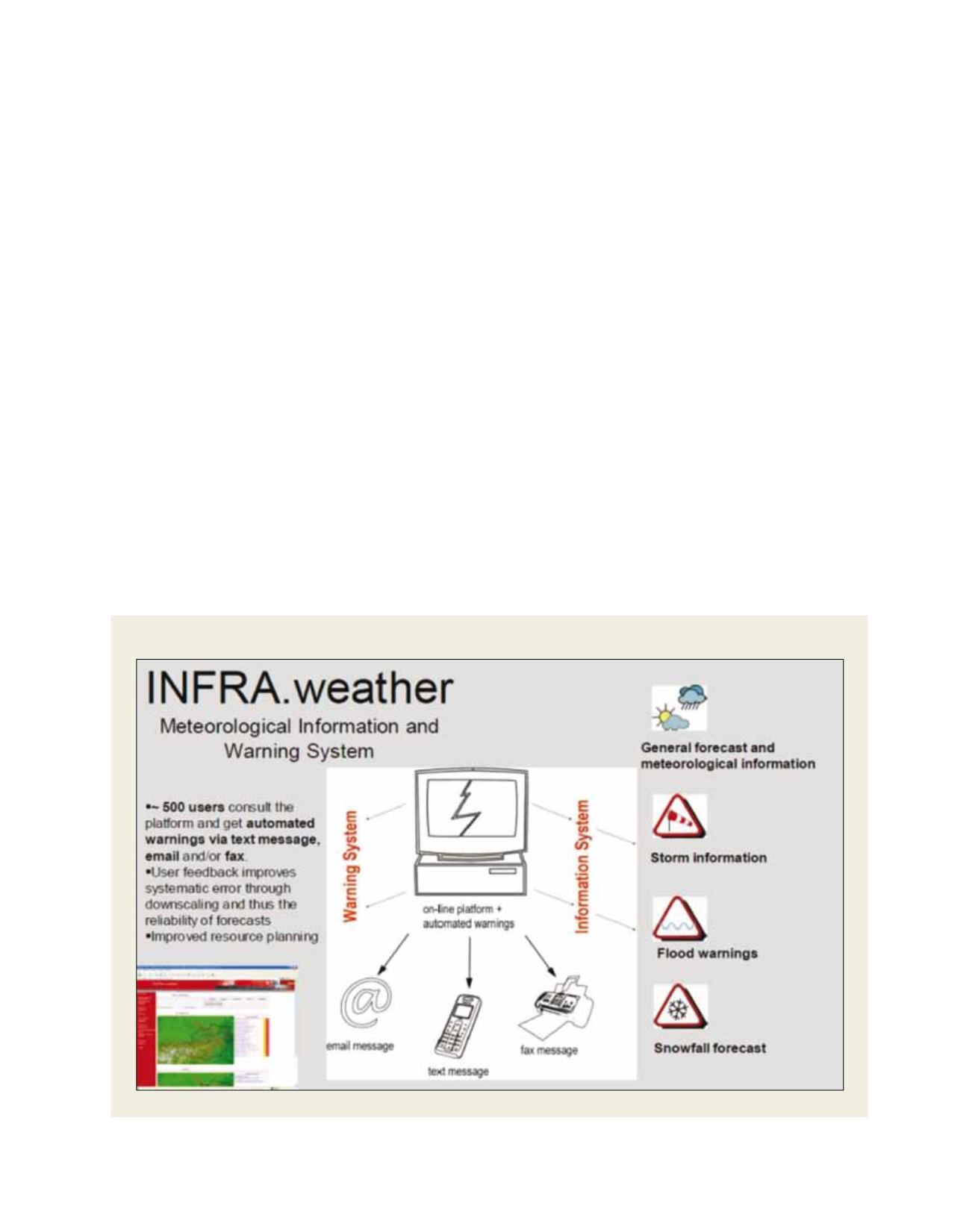

[
] 193
T
ransport
and
I
nfrastructure
can be long, and it may be difficult to find good experts,
but all these issues can be solved with good financing
and lobbying, and by the exchange of knowledge.
Sharing information
The exchange of knowledge is essential to quickly adapt
to climate change. Information can be transferred within
a company: for example, JR East created a training centre
that helps train employees based on past events. But
everyone can learn from the past, including civil society:
for instance, the Accident History Exhibition Hall in
Japan allows widespread access to information. What
is more, the information can be exchanged between
climate services and companies, in order to help them
adapt to climate change. Finally, the exchange of good
practices between companies is also possible; UIC serves
this purpose, namely with the ARISCC project.
Among the tools available are the holistic rail system
vulnerability tool which supports information on climate
vulnerability and adaptation actions at entire railway
system level; the sub-system vulnerability tools which
support information on climate vulnerability and adapta-
tion actions for railway sub-systems such as rolling stock;
and decision support tools for local/policy managers –
a set of tools to help local managers select appropriate
adaptation actions. In addition, the UK’s TRaCCA project
has researched climate change impact up to the 2040s.
ment. Train manufacturers use systems that protect the mechanic
components, the cabling, the coupler and local heating system and
reinforce the isolation and the heating systems.
Once again, the need for relevant information is paramount. For
instance, Finnish Railways duly considers weather forecasts in order
to act locally. Indeed, as the temperature distributions in wintertime
are extremely cold, the company decided to introduce specific mate-
rials in its rolling stocks to resist these conditions, such as stronger
lubricants, new insulation methods or specific coating materials to
prevent snow and ice adhesion.
Technical standards
Another way to adapt to new conditions is to develop standards;
indeed, if new infrastructures are built to resist to such weather
conditions, this will avoid future costs and damages. The European
Federation of Railway Contractors advocates a change in standards.
For instance, if bridges are built higher than currently, this will
enable the railways to accommodate larger tidal ranges due to sea
level rise over their lifespan, and the reinforcement of foundations
will allow them to cope with higher magnitude flood events.
In Northern Europe, climate change will result in wetter winters,
and more snow and ice episodes that will further threaten struc-
tures such as catenaries or switches and crosses. To address this
issue, railway companies implemented a new standard for catenar-
ies, which now have to have a pantograph of carbon/aluminum and
an Auto-Drop Device. It is not easy to change norms as standards are
often voluntary and not legally binding. The timescale for change
Source: UIC
The InfraWeather online portal developed by Austrian railway company OBB
















